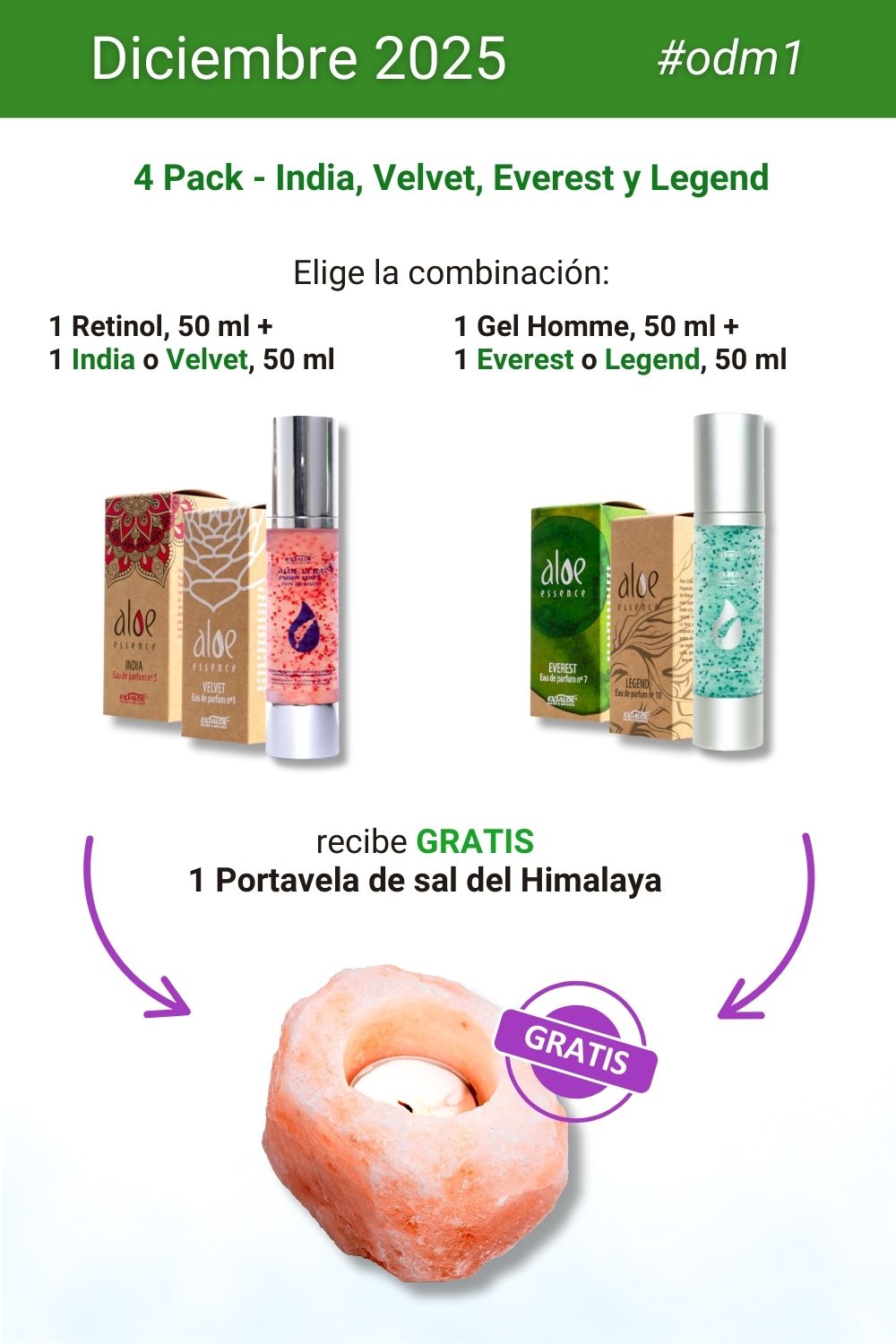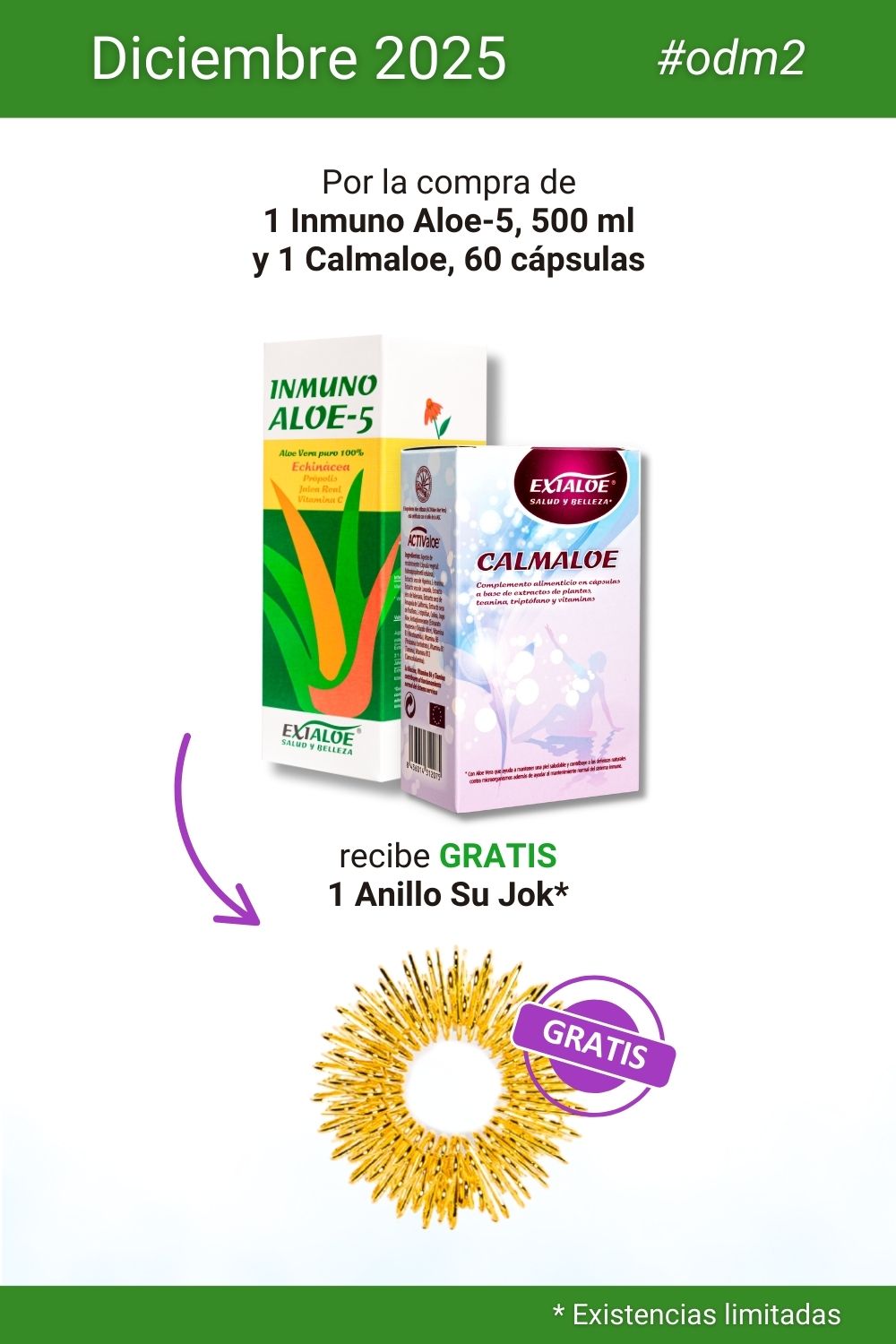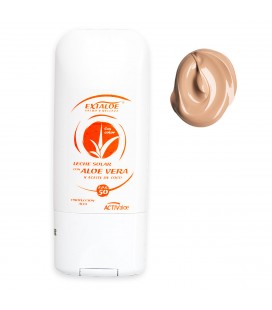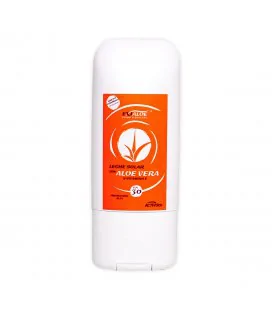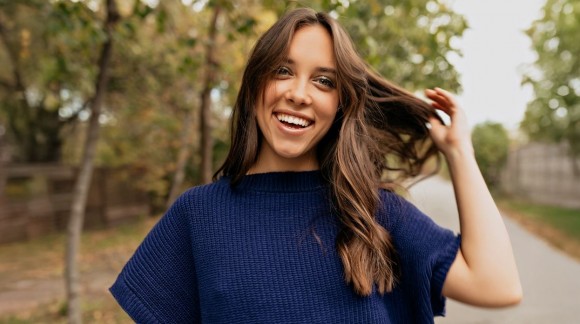
All About Sun Protection
We love enjoying the sun! Feeling its rays on the skin and getting that golden tan that's so attractive. And it's normal, the sun is a source of life and provides us with important benefits, like the synthesis of vitamin D, essential for our bones and immune system. But, as with everything in life, balance is key. Excessive sun exposure, especially without proper protection, can have serious consequences for our skin: from sunburns to premature aging and, more worryingly, a higher risk of developing skin cancer.
In this article, we're going to break down everything you need to know to enjoy summer and the sun safely, taking care of your skin from the inside and out. Get ready to learn the secrets of sun protection!
Let's start by understanding our skin type and how it influences the decisions we need to make to protect ourselves.
What Are Skin Phototypes? The Fitzpatrick Scale
Have you ever wondered why some people tan easily while others burn in minutes? The answer lies in your skin phototype. In 1975, dermatologist Thomas B. Fitzpatrick created the Fitzpatrick scale, which helps us understand how our skin reacts to sun exposure based on its ability to produce melanin, the pigment that gives us color and protects us from the sun.
This scale divides skin into six levels, from the fairest to the darkest:
(On mobile, you can scroll the table to the right)
| Phototype | Typical Skin Color | Typical Eye/Hair Color | Reaction to Sun | Recommended Protection |
|---|---|---|---|---|
| I | Very fair, pale or milky, with freckles. | Blue, gray or light green; very light blond or red. | Always burns, never tans. Extremely sensitive. | SPF 50+. Avoid direct exposure. Hat and UV glasses. |
| II | Fair, pink or beige, often with freckles. | Blue, green or hazel; blond or light brown. | Burns easily, tans minimally. Very sensitive. | SPF 30-50. Avoid direct exposure. Hat and UV glasses. |
| III | Beige or slightly golden. | Hazel or light brown; light or medium brown. | May burn, tans gradually. Sensitive. | SPF 30. Limit exposure. Hat and UV glasses. |
| IV | Olive or light brown. | Dark brown; dark brown. | Rarely burns, tans easily. Tolerates sun well. | SPF 15-30. Caution in exposure. |
| V | Dark brown. | Dark brown; dark brown to black. | Rarely burns, tans easily and acquires a dark color. Very tolerant. | SPF 15. Caution in exposure. |
| VI | Very dark or black. | Dark brown; black. | Does not burn thanks to its high natural protection. Very high tolerance. | SPF 15. Caution in exposure. |
Why is it so important to know your phototype? Because it allows you to choose appropriate sun protection and prevent damage. Phototypes I and II are the most vulnerable and have a much higher risk of burns and melanoma, a type of skin cancer. Although darker phototypes (IV-VI) have greater natural resistance, it doesn't mean they have no risks. They can suffer photoaging, spots like melasma or post-inflammatory hyperpigmentation, and also skin cancer.
The classification of your phototype is something genetic and doesn't change throughout your life (it doesn't matter if we tan more or less during the summer). Knowing it is the first step to protecting yourself intelligently. Now, what types of sunscreens exist? Will any work for me?
Types of Sunscreens: Differences and Myths Between Protection 15, 30, 50, and 100
When we talk about sunscreens, the market offers a great variety. But do you really know the differences between them and how they work?
Physical Filters (Mineral): Create a Protective Barrier
These sunscreens use minerals like zinc oxide and titanium dioxide. They work by creating a kind of "shield" on your skin that reflects and scatters UV rays, like a mirror. They are ideal for:
• Children under two years old: since they are not absorbed by the skin.
• Very sensitive skin: because they minimize the risk of irritation.
• People with allergies to chemical filters.
Chemical Filters: Absorb and Disperse Radiation
Chemical sunscreens contain organic compounds like oxybenzone or avobenzone. Their mechanism is different: they absorb UV radiation upon contact with the skin and transform it into heat, releasing it safely. They are usually lighter and transparent, making them more popular. However, some, like oxybenzone, have raised concerns for being potential endocrine disruptors.
Biological Filters
These filters do not block UV rays directly but act as antioxidants, fighting the free radicals that the sun can generate in our skin. They are used as a complement to physical and chemical filters, increasing the overall efficacy of the sunscreen and offering extra repair and anti-aging effects.
The Meaning of SPF and the Importance of "Broad Spectrum" Protection
Simplifying a lot, the sun's rays are divided into 2 main types: UVA and UVB. UVA (responsible for premature aging and deep skin damage) are more common and long-wave, meaning they are less powerful but penetrate deeper into the skin. UVB (main cause of sunburns) are less common and short-wave, so they have more energy and penetrate less deeply, more easily producing external burns.
It's very important to protect the skin because both damage the DNA of our cells and increase the risk of skin cancer. But... why is this clarification necessary?
The Sun Protection Factor (SPF) is the measure of a sunscreen's efficacy against UVB rays. It indicates how much longer your skin can withstand UVB radiation without burning when protected compared to unprotected skin. Notice? SPF does not include protection against UVA rays. For this reason, it's essential that your sunscreen is "broad spectrum", protecting against both UVA and UVB rays.
What Does SPF 15, 30, 50, or 100 Mean?
UVB protection increases with SPF but the "performance" improvement is not linear. This is approximately what each blocks:
• SPF 10: blocks 90% of UVB rays, considered low protection.
• SPF 15: blocks 93% of UVB rays, considered medium protection.
• SPF 30: blocks 97% of UVB rays, considered high protection.
• SPF 50: blocks 98% of UVB rays, considered high protection.
• SPF 100: blocks 99% of UVB rays, considered high protection.
As you can see, no sunscreen offers 100% protection. The difference between SPF 30 and SPF 50+ is minimal, just an additional 1%.
2 Very Important Ideas:
As you can see, no sunscreen offers 100% protection. The difference between SPF 30 and SPF 50+ is minimal, just an additional 1%.
• Many believe that using a product with high SPF allows more time in the sun, but it's not entirely true. SPF refers to the percentage of UVB rays blocked, not the total protection time. For example, if a person would burn in 10 minutes in the sun, an SPF 30 product would help avoid burning for 300 minutes, and an SPF 50 product for 500 minutes. But the time the product is effective on the skin depends on factors like bathing, sweating, towel contact, or sand... And therefore, it's recommended to reapply any sunscreen every 2-3 hours.
• Even if you use a high-protection sunscreen, SPF 50+, you could be at risk if it's not "broad spectrum" since it means it still lets UVA rays through.
Having learned about our skin type and the different types of sunscreens that exist, let's answer a key question for health: Is there a safe tan?
Is There a Safe Tan?
This is a question many of us ask. And the answer, from a dermatological perspective, is that "there is no safe tan".
Why? Because tanning, whether from the beach or a UVA booth, is a sign that your skin has suffered damage. It's a biological response of the skin to UV radiation aggression, activating melanin production to try to defend itself. In other words, that beautiful golden tone we love is actually a sign that the DNA of your skin cells has been affected.
Exposure to harmful UV rays increases the risk of melanoma and other types of skin cancer. UVA booths are not a safe alternative. They expose us to higher concentrations of UVA rays and significantly increase the risk of melanoma, especially in teenagers.
So if I use sunscreen, I won't tan? Yes, it's possible to tan even with sunscreen, though to a lesser degree. Remember that no sunscreen blocks 100% of UV radiation. An SPF 50, for example, allows about 2% of UVB rays and small amounts of UVA to reach your skin. Sunscreen moderates the tanning process and reduces damage, making it "safer", but it doesn't prevent it completely.
Repeated and excessive tanning, even with sunscreen, often leads to consequences like premature aging (wrinkles, spots), actinic keratosis, eye damage, and a weakened immune system. And be careful, skin has "memory": sun damage is cumulative over your life.
Tips and Tricks to Make the Most of Summer Safely
To enjoy the sun and summer to the fullest without risking your skin, sun protection benefits from a multi-layer action system.
Correct Application of Sunscreen is Key
The efficacy of sunscreen depends directly on how we apply it:
• Adequate Amount: Be generous. Think of the size of a shot glass for an adult's body, and the size of a five-cent coin for face and neck.
Did You Know... It's a mistake to save sunscreen from one summer to the next. The 2 main reasons are:
• Loses Efficacy: Sunscreen filters lose effectiveness about a year after opening.
• If We Use It Right, It Runs Out Sooner: Applying the recommended amount (about 30 ml every 2-3 hours), a normal bottle lasts 3-6 beach visits for one person, or 1-2 if the whole family uses it.
• Timing: Apply it 15 to 30 minutes before sun exposure.
• Frequency: Reapply every 2 or 3 hours, or more often if you sweat, swim, or dry with a towel. Even "water-resistant" products need reapplication.
• Don't Miss Any Spots: Don't forget ears, nape, top of feet, back of hands, lips, hair part, and any exposed scalp area!
Extra Photoprotection Strategies
Sunscreen is our ally, but not the only one:
• Seek Shade: Limit your time in direct sun, especially between 10 a.m. and 4 p.m., when UV rays are most intense. The "shadow rule" is very useful: if your shadow is shorter than your height, get in the shade!
• Dress to Protect: Wear clothing that covers most of your skin, preferably dark colors and thick fabrics. There is UPF-certified clothing (Ultraviolet Protection Factor).
• Wide-Brimmed Hats: They are essential to protect your face, eyes, ears, and nape.
• Sunglasses: Choose ones that block 99% to 100% of UVA and UVB rays, and wraparound to protect the sides well.
• Caution on Cloudy and Windy Days: Don't trust them. Up to 85% of UV rays can penetrate clouds, and wind doesn't protect you—in fact, it can mask the start of a burn.
Climate change is intensifying UV radiation levels, so being aware and applying these photoprotection measures is more important than ever. There are mobile apps, like UV-Derma, that let you monitor the UV Index in real time and receive personalized recommendations based on your phototype.
At Exialoe, we are aware of how necessary sun protection is to enjoy the outdoors and be safer. In our store, you can find:
Enjoy effective sun protection and intensive care with our Sunscreen Lotion SPF 30. Its formula with UVA/UVB filters, water-resistant and free of preservatives or parabens, protects you safely. Enriched with Aloe Vera and a cocktail of nourishing oils, it hydrates and repairs your skin while promoting a uniform and healthy tan.
Enjoy the sun safely with our Sunscreen Lotion SPF 50. It offers high UVA and UVB protection thanks to its physical Titanium Dioxide filter (NON-NANO). Its innovative tinted formula evens out the tone and avoids the white effect, while its biodegradable and marine ecosystem-friendly composition cares for your skin and the planet. Plus, it's water-resistant for maximum protection.
Hydro-Nourishing Q10 Cream SPF 30:
With a protection factor of 30, it's the ultimate day cream that treats, nourishes, and protects. It's a powerful anti-wrinkle treatment with Coenzyme Q10 and 25% Aloe Vera that prevents spots and premature aging thanks to its high sun protection. Formulated with 21 natural ingredients, free of preservatives or parabens. Ideal for sensitive skin.
With a low protection factor of 14~%, ideal for the afternoon, this all-in-one cream hydrates, treats, perfects, and protects your skin instantly. Its lightweight formula, enriched with Hyaluronic Acid, Collagen, and Aloe Vera, covers imperfections and evens out the tone for a natural, luminous finish.
Featured articles
Successfully Overcome Seasonal Allergies
Do you suffer from seasonal allergies or know someone who does? In Spain, 1 in 4 people are affected, but this year...Read More
4 Habits to Care for Your Hair the Way It Deserves
In this article, we'll explore 4 simple habits to give your hair the care it deserves. By following these tips,...Read More
Vacaciones Exialoe 2025 - Galicia

